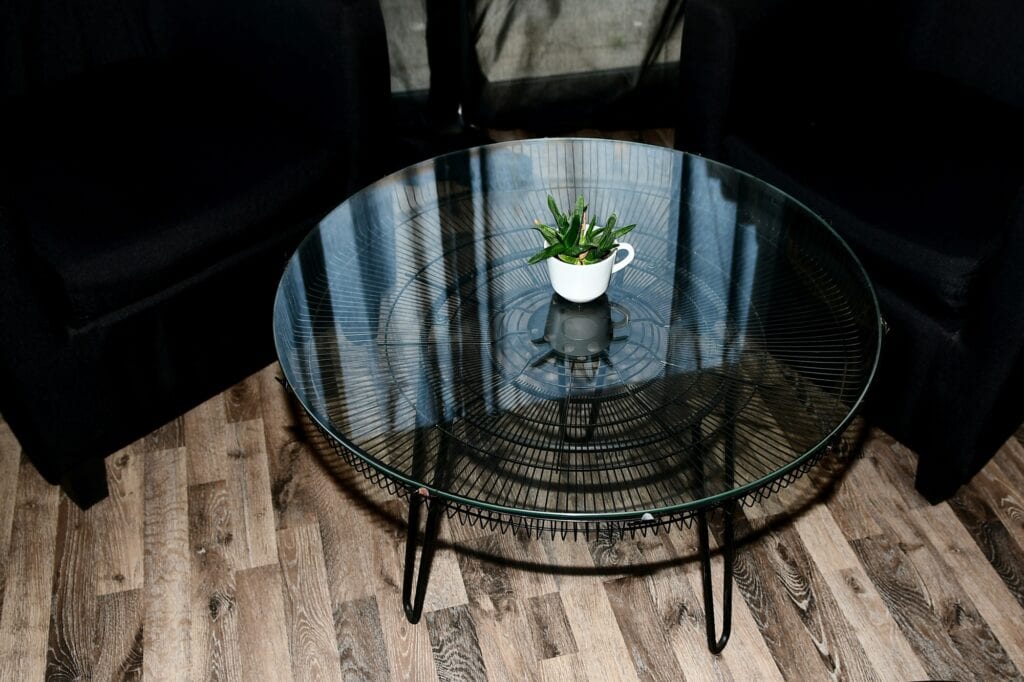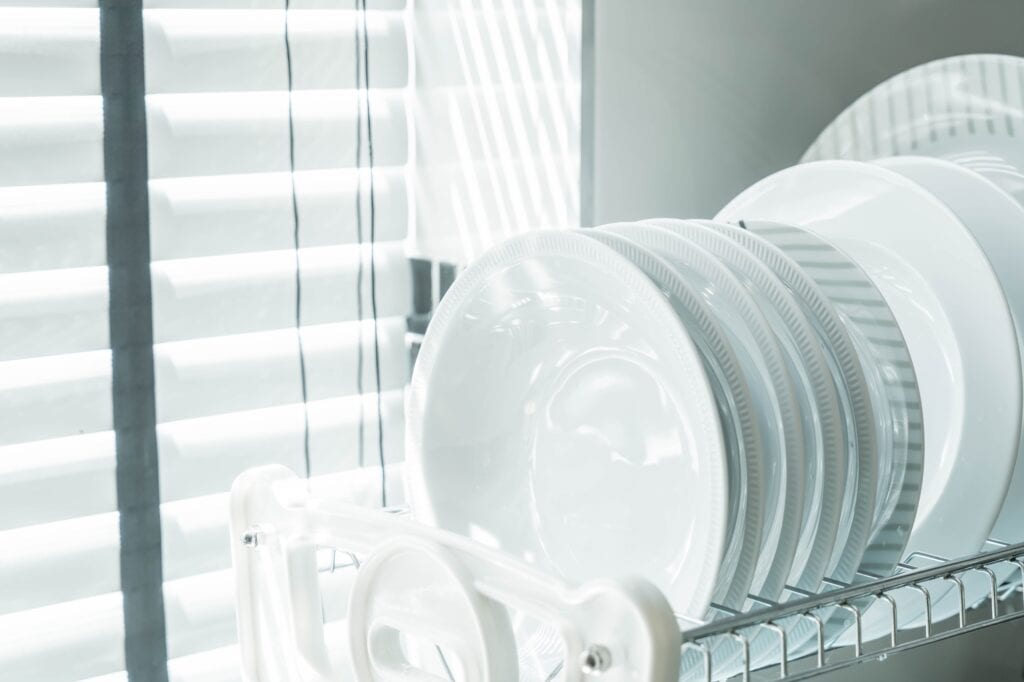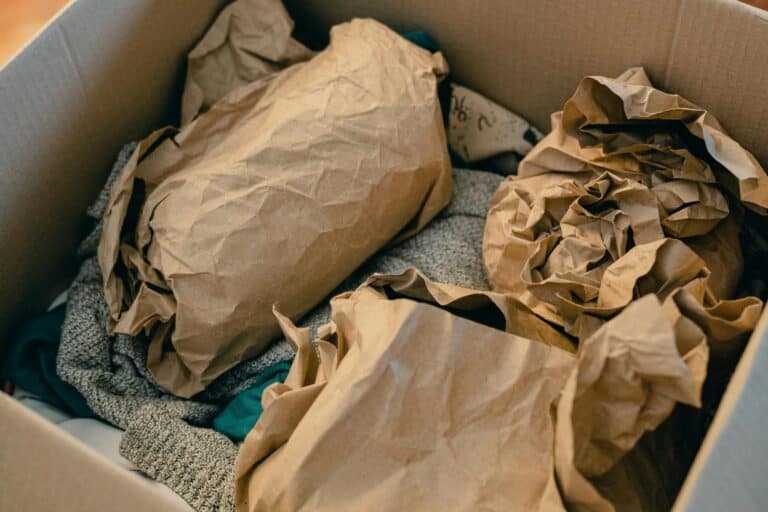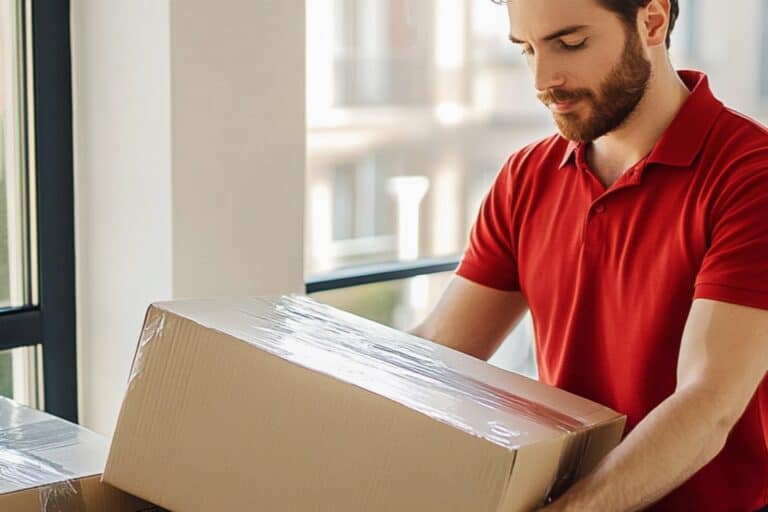Worried about how to pack fragile items for your move? This guide provides the essential steps to keep your delicate belongings safe during transit. From choosing the right packing materials to specific techniques for wrapping and securing items, you’ll find everything you need to ensure your fragile items arrive intact.
Key Takeaways
- Use high-quality packing materials such as bubble wrap, packing peanuts, and sturdy boxes to protect fragile items during moves.
- Wrap each fragile item individually and fill empty spaces in boxes to prevent shifting and minimise the risk of damage.
- Label boxes as ‘fragile’ for careful handling, and consider using professional moving services for added protection of delicate belongings.
Gather Essential Packing Materials You’ll Need
Successful moves hinge on using the right packing materials. Protecting fragile items involves more than just old newspapers and packing tape; high-quality supplies are essential. Gather essential materials such as bubble wrap, packing peanuts, sturdy boxes, and packing paper.
These provide your first line of defence against damage. For delicate items like vases or glassware, bubble wrap or foam peanuts cushion them against shocks and vibrations. Towels or foam are also useful for wrapping plates to minimise breakage risk during transit.
Be sure to fill empty spaces in your boxes with packing peanuts, crumpled newspaper, or towelling to prevent items from shifting and getting damaged. High-quality packing materials minimise damage risk and ensure your treasured items reach your new home safely. Sturdy boxes are crucial for protecting fragile items effectively. Using the best packing material can further enhance the safety of your belongings.
Wrap Fragile Items Individually
A golden rule for packing fragile items is to wrap each item individually. Though this step may seem tedious, it provides maximum protection. Carefully wrap each fragile item in packing paper or bubble wrap to cushion it from all angles, absorbing shocks and preventing direct contact with other items.
For delicate items like glassware and ceramics, use bubble wrap or tissue paper designed to conform to the item’s shape, providing a snug fit that minimises movement during transport. In the absence of bubble wrap, clothing and crumpled newspaper can serve as effective alternatives, offering both cushioning and stability.
Ensure these items are wrapped in individual layers of packing materials before placing them in boxes to prevent movement. This method significantly reduces the risk of items bumping into each other and cracking during transit. For best results, pack fragile items in their boxes whenever possible, especially when packing delicate items.
Use Small Boxes for Fragile Items
Opting for small boxes for fragile items is a smart strategy. Smaller boxes help minimise movement during transport, reducing breakage risk. Delicate items like glassware and ceramics are best suited for these boxes. To further protect these items, cover the bottom of the box with crumpled packing paper before placing them inside.
Selecting the right packing materials is crucial. Newspaper, packing paper, bubble wrap, and packing peanuts effectively secure fragile items. Remember, even medium-sized boxes can become too heavy if overloaded, so opt for smaller boxes for ease of handling and better protection for your valuables.
Fill Empty Spaces in Boxes
Empty spaces in boxes can cause damage during moves. Properly filling these spaces ensures items do not shift and break during transit. The crumpled newspaper serves as an eco-friendly and effective cushioning material. If bubble wrap or packing peanuts are unavailable, consider using cloth towels, socks, or shirts to fill the gaps.
Filling hollow items like glasses and jars with packing paper helps absorb shocks and vibrations, providing additional protection. This practice prevents internal movement and mitigates the risk of damage during transport. Filling all empty spaces is crucial for the safety of your fragile belongings.

Utilise Cardboard Dividers for Glassware
Cardboard dividers are invaluable for packing glassware. They create individual compartments for each item, preventing them from knocking into each other during transit. Using bubble wrap with cardboard dividers adds an extra layer of cushioning, ensuring your delicate glassware remains intact.
Special boxes with built-in dividers are perfect for glassware. They provide better protection compared to regular boxes, making them ideal for separating and securing your glasses. Utilising these dividers and additional materials ensures your glassware will arrive at your new home in one piece.
Disassemble and Protect Furniture
Disassembling furniture prevents friction damage and makes moving more manageable. Breaking down bulky furniture into smaller parts facilitates easier handling and transport. Once disassembled, wrap each piece separately in protective layers like bubble wrap and secure with packing tape.
For added protection, use moving blankets or thick towels to wrap the pieces after covering them in bubble wrap. This cushions the furniture and prevents scratches and dents during the move. Remove any glass components and wrap them individually to avoid breakage.
Secure Electronics and TVs
Electronics and TVs require special attention during a move. If you have the original packaging, use it for maximum protection. Otherwise, wrap screens in bubble wrap and cover them with a thick towel or blanket for added safety. Label the box with ‘Glass’ and ‘This end up’ to ensure careful handling.
For additional stability, use two boxes as a stand to assist in packing the TV. This method helps keep the TV upright and secure during transit, reducing the risk of damage. These precautions ensure your electronics arrive safely at your new home.
Fill Hollow Items with Packing Paper
Hollow items like vases and jars need to be filled to prevent internal movement and potential damage during transport. Packing paper is ideal for this task, as it can be easily crumpled and stuffed inside, ensuring the items remain intact.
Fill these items completely with packing paper to eliminate any space in the packing process. This practice absorbs shocks and prevents the items from moving and breaking during transit. Properly filling hollow items adds an extra layer of protection to your fragile belongings.
Use Towels and Blankets for Extra Protection
Soft materials like towels and blankets provide excellent cushioning for larger fragile items. Wrapping items such as TVs and picture frames in these materials offers significant protection against impacts. If bubble wrap is unavailable, towels, linens, and newsprint can serve as valuable alternatives.
Using bedding or thick blankets after wrapping items adds another layer of protection, ensuring your fragile belongings are secure during transport. This method prevents scratches and cushion items from potential damage.
Special Considerations for Picture Frames and Artwork
Picture frames and artwork require special care during packing. Cushion individual frames with bubble wrap and packing paper to protect the glass and frame edges. Corner protectors can further safeguard the edges from damage.
For larger frames and artwork, speciality boxes like mirror boxes offer better protection compared to standard boxes. These boxes accommodate the size and fragility of such items, ensuring they arrive at your new home undamaged.

Labelling is Crucial
Labelling your boxes as ‘fragile’ is crucial for ensuring they are handled with care during the move. By using bold colours or distinctive tape, you can make these labels stand out, making it easier for movers to spot them. Including visual indicators, such as a broken glass image, further enhances recognition and ensures your fragile items receive the attention they deserve. This precaution not only alerts movers to the delicate nature of the contents but also serves as a reminder to handle the boxes gently.
Proper labelling can prevent mishaps like stacking heavy items on top of fragile ones, which could lead to damage. It’s a small step that can make a significant difference in the safety of your belongings. In addition, consider placing labels on multiple sides of the box for maximum visibility during transport.
Pack Heavy Items at the Bottom
Packing heavy items at the bottom of the box prevents crushing delicate items placed on top. Fill the bottom of the box with packing materials, then place the heavier items, followed by lighter, more delicate items. This layering technique ensures stability and protects your fragile belongings.
Using multiple layers of packing materials can further safeguard the contents when packing heavier items. When loading furniture into the moving truck, place heavier pieces at the bottom to maintain overall stability during transport.
Transporting Fragile Items Safely
Transporting fragile items requires careful planning and execution. Professional moving services offer additional protection, as movers are experienced in handling delicate items with care. A moving company ensures your fragile belongings are transported safely to your new location.
Self-storage options can be considered for temporarily housing fragile items. This solution provides a secure environment for your valuables until you are ready to move them into your new home, reducing stress during the moving process.
Summary
In summary, ensuring the safety of your fragile items during a move involves careful planning, the right materials, and meticulous packing techniques. From gathering essential packing supplies to utilising professional moving services, each step is crucial in protecting your valuable belongings. By following these guidelines, you can make your move to Woolwich a seamless and stress-free experience.
Frequently Asked Questions
What are the essential packing materials for fragile items?
To effectively pack fragile items, use bubble wrap, packing peanuts, sturdy boxes, and packing paper. These materials provide necessary protection to prevent damage during transport.
How should I wrap fragile items individually?
Wrap each fragile item individually in packing paper or bubble wrap for optimal protection. If those aren’t available, you can use clothing or crumpled newspaper as alternatives.
Why should I use small boxes for fragile items?
Using small boxes for fragile items minimises movement during transport, which significantly reduces the risk of breakage. Additionally, they are easier to handle, making the packing process more efficient.
How can I fill empty spaces in boxes?
To effectively fill empty spaces in boxes, use materials such as packing peanuts, crumpled newspaper, or cloth towels. This will help prevent items from shifting, ensuring they remain secure during transit.
What special considerations should I take for picture frames and artwork?
To ensure the safety of your picture frames and artwork, use bubble wrap and packing paper for cushioning, along with corner protectors and speciality boxes for added protection. Taking these measures will help prevent damage during transport or storage.







